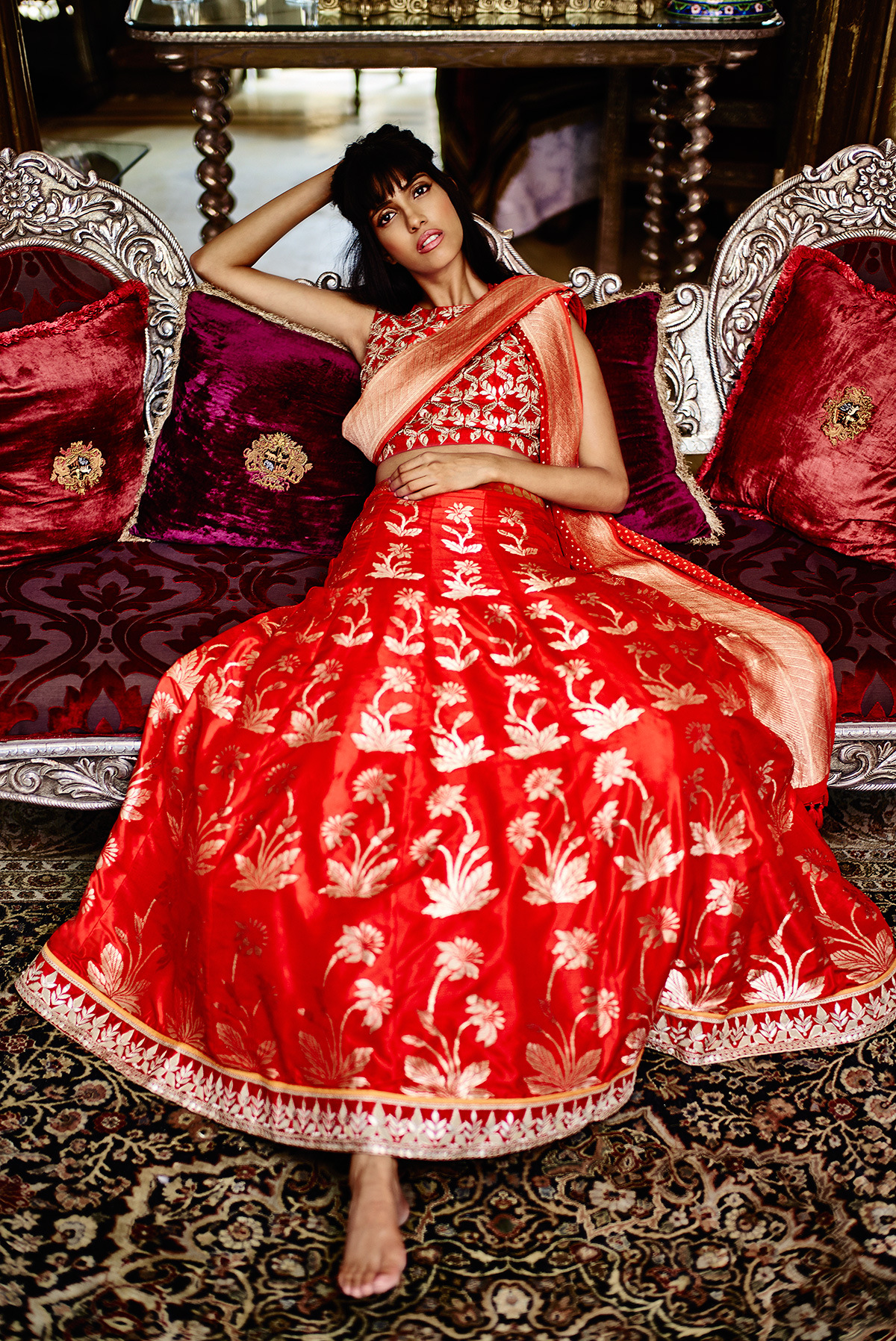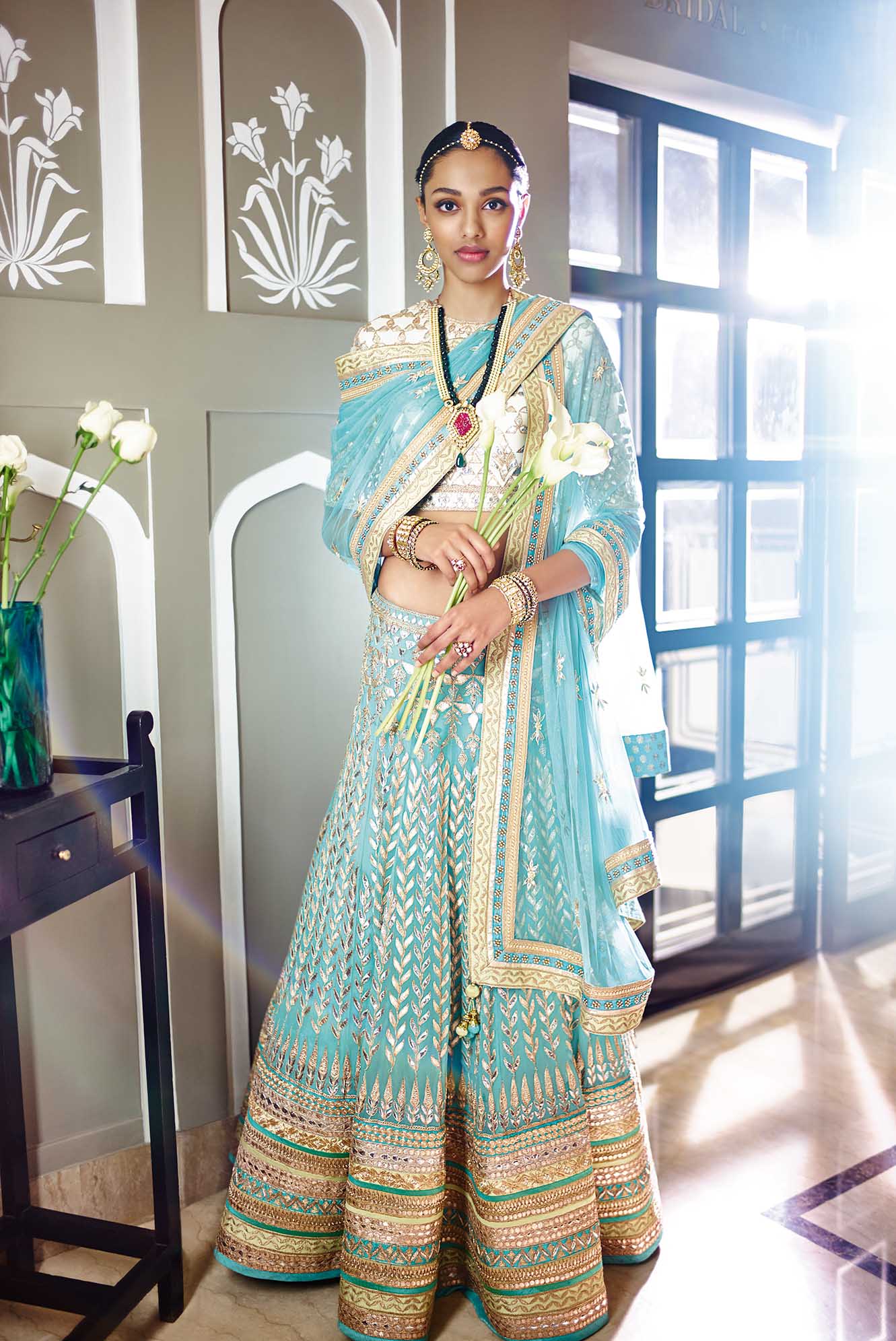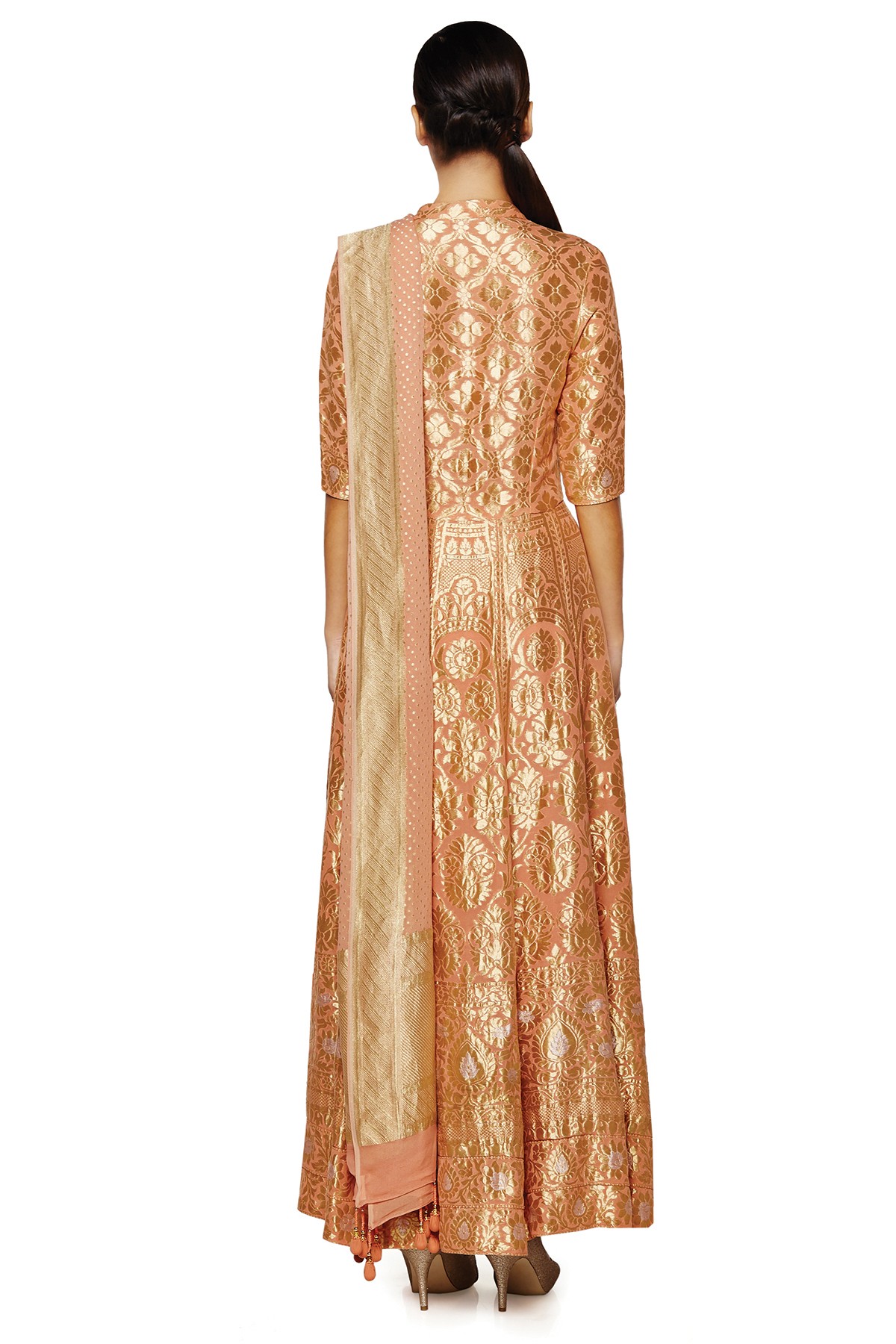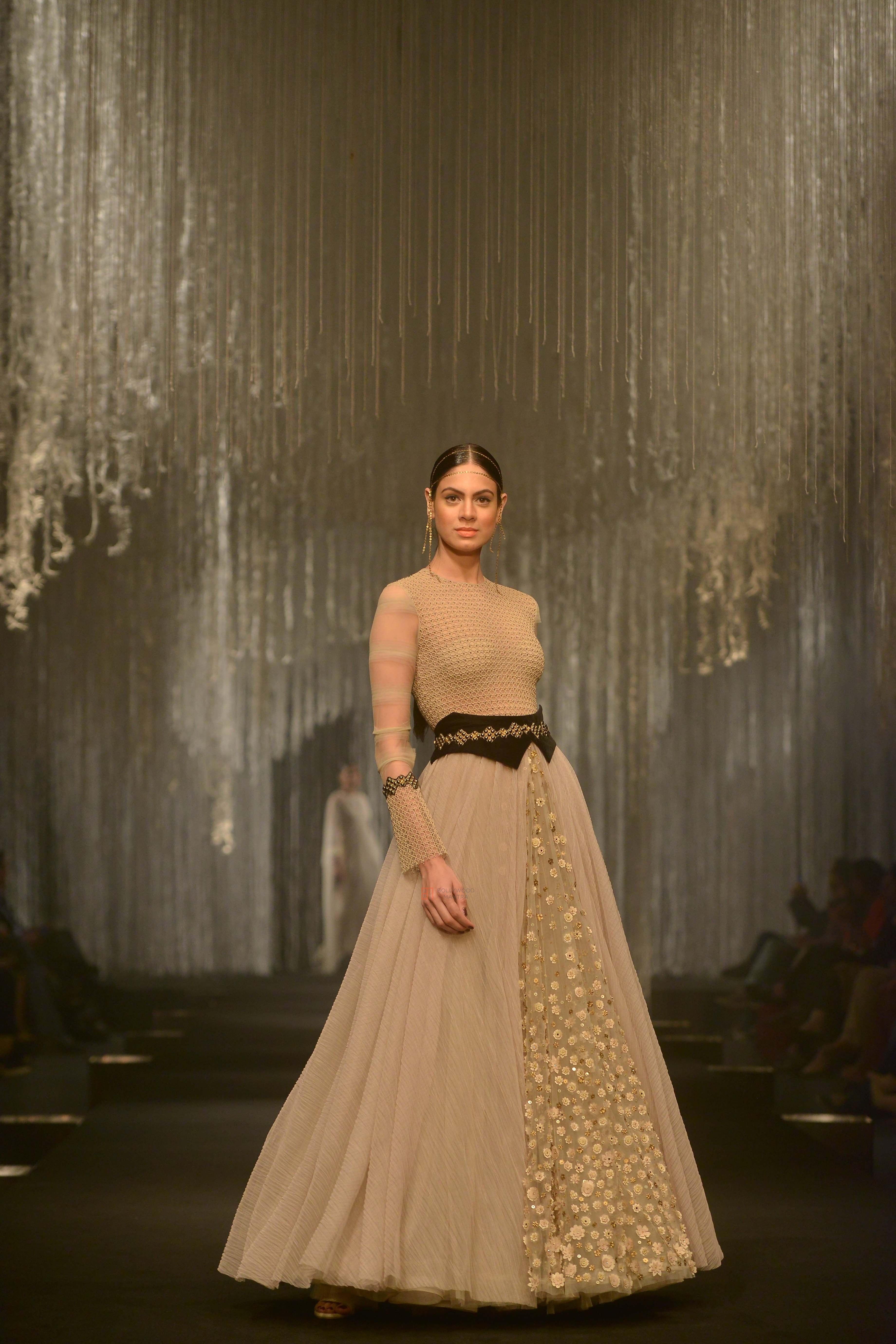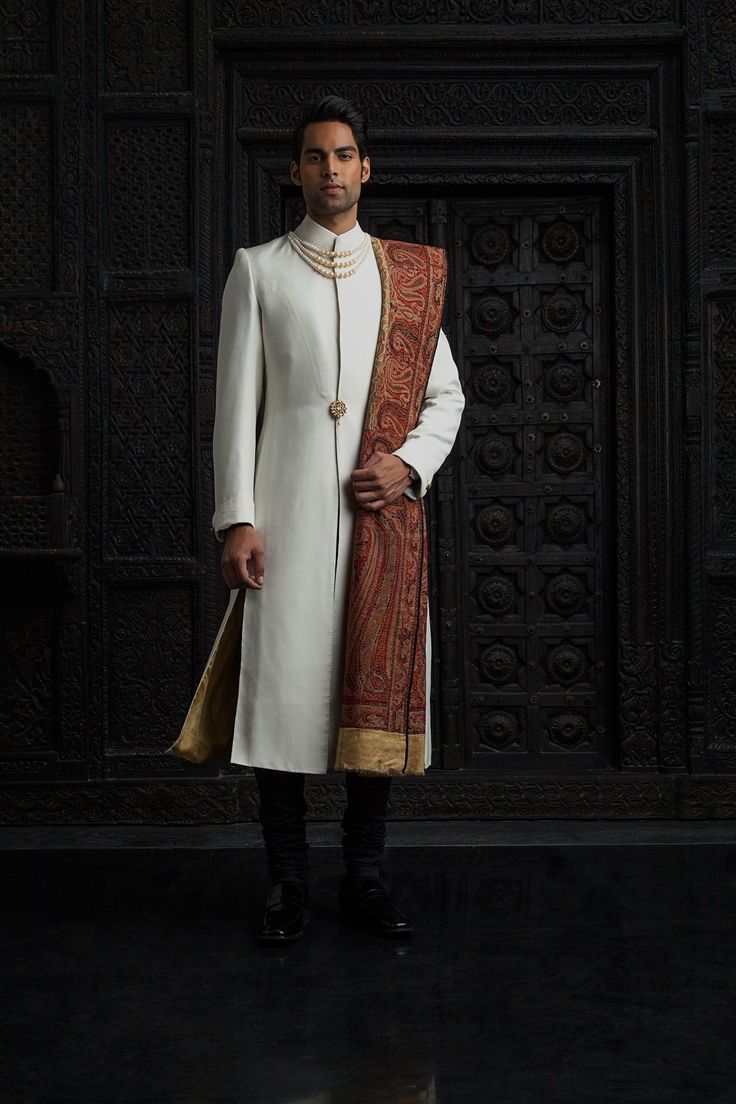Indian haute couture designers take the e-commerce route through their extensive e-retail stores. The challenges are several, but then there are multiple opportunities too
The gossip in the market is that every designer worth their couture collection in the Indian market is planning to sell online. From Tarun Tahiliani to Gaurav Gupta-most big designers are looking to not merely have an online presence, but also host e-stores.
Anita Dongre
Pernia Qureshi’s Pernia’s Pop-up was the pioneer, putting out couture collections of some of the best Indian designers, including bigwigs like Sabyasachi Mukherjee and Tahilaini, in the digital marketplace. In the last few years, sites like Exclusively.com have tapped into this online boom by putting out luxury products by some of India’s best designers, online.
Anita Dongre
The trend, however, is shifting slowly as designers and brands decide to directly establish extensive digital stores. Global trend forecaster WGSN, in a survey on the British luxury industry, has pointed out that 57 per cent of luxury brands have experienced a surge in sales as a direct result of building sophisticated, imaginative e-commerce offerings.
Anita Dongre
The Indian luxury fashion industry has also taken the lead and is working on establishing their versions of e-stores. “The digital world allows me to reach out to my customers, from all over the world, directly,” says fashion maven Gaurav Gupta. “I have my boutiques on other portals as well, but I also wanted to build my own, which was not just a website but a proper store, aesthetically done, like my brick-and-mortar stores.”
Anita Dongre
According to designer Ankur Modi, one of the brains behind the brand AM:PM, an online presence works beautifully for a design house. “At the beginning, we debated whether physical retail will suffer due to online sales, and we did tread with a lot of caution. But, over time, we realised that there is no negative impact on our brick-and-mortar sales. On the contrary, we are able to reach a wider customer base, which your physical stores cannot, and that increases brand awareness.”
Anita Dongre
Technology has turned out to a great leveler as far as e-selling fashion online goes. Anita Dongre, of The House of Anita Dongre, says that an online store allows them to offer an unmatched shopping experience, whichever part of India, or the world they are sitting in. “Also, within India, it allows us to reach consumers in cities where we don’t have any sort of presence,” she says. The brand offers the same pricing online as well as offline, except for the signature label, Anita Dongre, which offers a special collection for online customers.
Tarun Tahiliani
Swimwear designers Shivan Bhatiya and Narresh Kukreja, the men behind the label Shivan & Narresh, say that curated online stores allows them to reach to consumers who are aware of their brand, and their e-store accounts for almost 12 per cent of their sales.
Many designers like Gupta introduce their entire collection online, as much as they do offline. “So, a customer in London or New York can order the garment online, and I can have it delivered from India within two or three days,” he adds.
Tarun Tahiliani
Providing the manual
Bespoke couture offerings allow brands and designers to post measurement manuals, and offer services like video chat options, stylist-on-call option, and appointments at the store with a stylist, as additional services, to aid customisation. Labels like Shivan & Narresh allow women to register for their customization service through their e-portal, and then dedicate a person in their team to get in touch with the client “to ensure a personal touch and a warm experience”.
While there are several advantages to hosting an e-store, the disadvantages are the lack of interaction with the client, one of the main requirements of luxury retail, and the creation of an inventory which will help fulfill e-orders. AM:PM works with a minimum inventory for online sales and mostly rely on making the order when it comes in. This means that a designer can sometimes take over two to three weeks to deliver an order. “Fortunately, for us, there are very few returns, as we go through a very strict quality control regime. We are targeting a very different customer base through our online store—people who live abroad and in B- and C-towns, and who do not have access to physical stores.”
Tarun Tahiliani
Given that e-commerce for haute couture is still in the nascent stage, one of the biggest challenges designers face is putting together a team that would look after logistics, inventory, and other such. “Whether for alterations that needs to be looked into, or for coordination, we need to have an extremely efficient customer service,” says Gupta, who is also planning to also launch a mobile app.
AM: PM has outsourced their e-commerce work to an independent agency. “You need dedicated staff for marketing and driving traffic, a separate team for customer orders and service, plus a logistics team that will take care of shipment and returns.” Their website is powered by Exclusively.com, which handles the customer service and shipment logistics.
Ultimately, most designers realize that the only way they can reach a younger generation, the generation that will be, or already is their customer today, is through the digital route. “An online portal is enticing, with its easy outreach, analytical tools and low overheads,” say Bhatiya.




